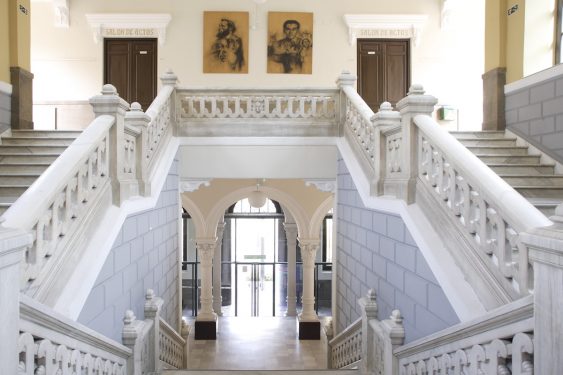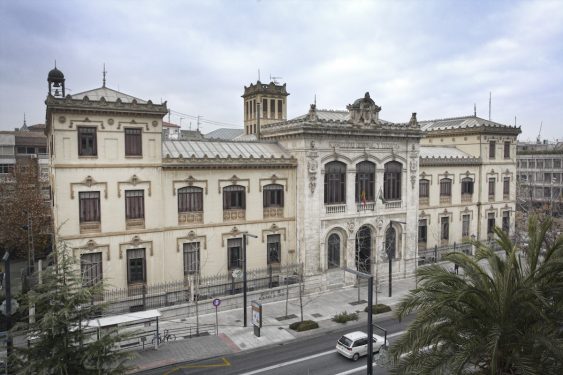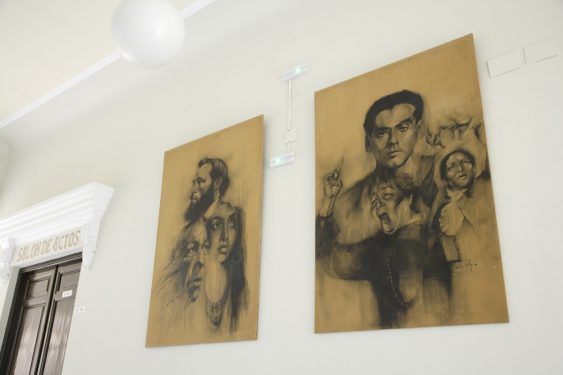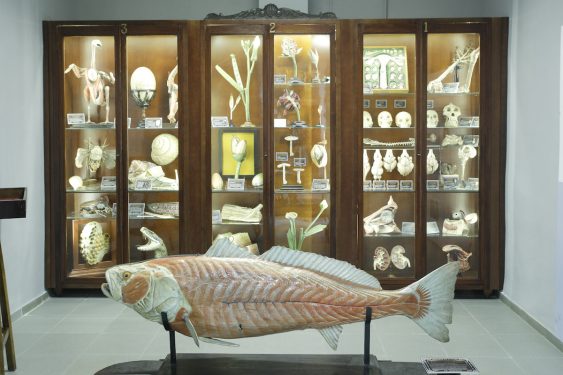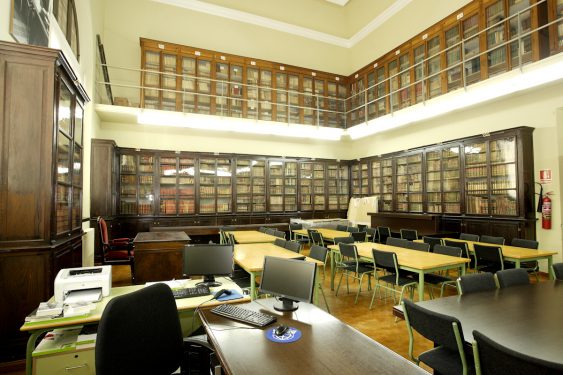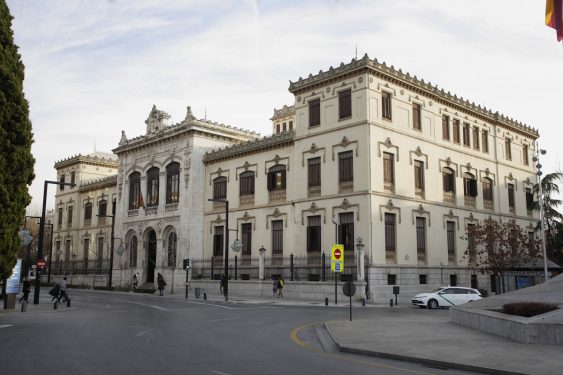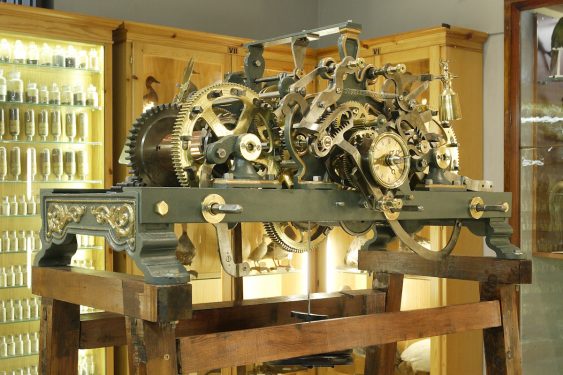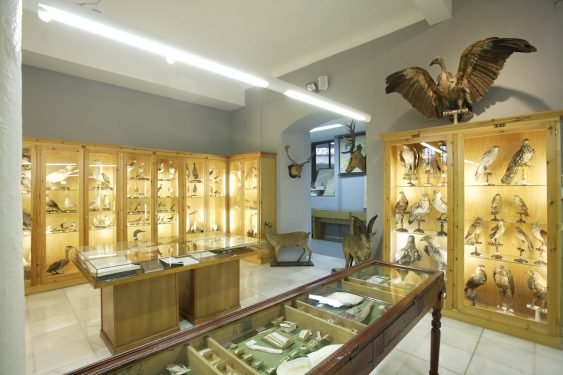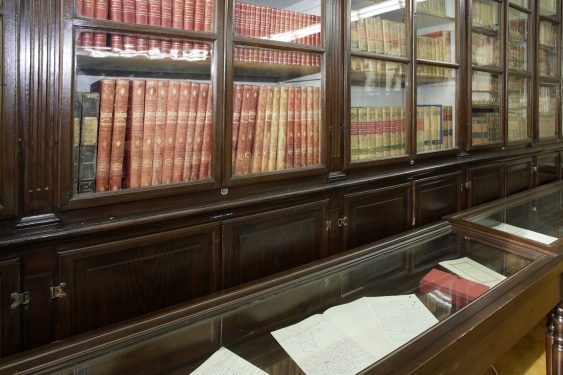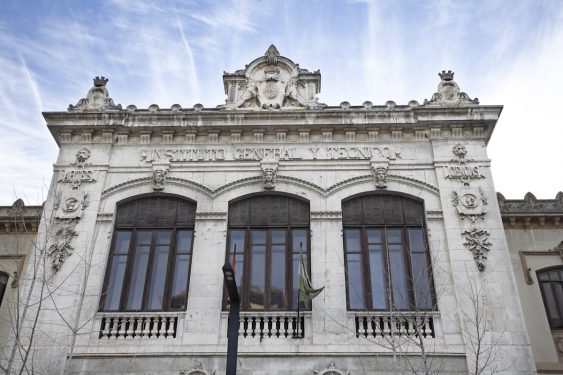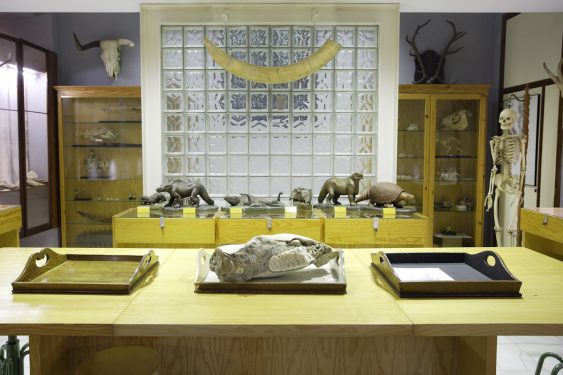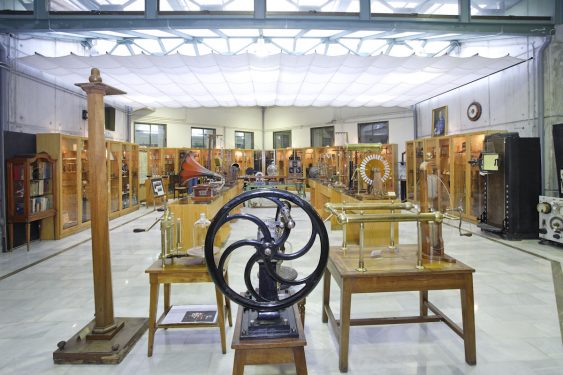Building inaugurated in 1918, headquarters of the General Technical Institute. Although the poet did not study there for his high school, his academic record has been preserved.
The former Instituto General Técnico (General Technical Institute), founded in 1845, kept the academic records of Federico García Lorca as a high school student and of his brother Francisco, as well as other literary personalities such as Francisco Ayala and Ángel Ganivet.
A series of delays in the completion of the works prevented Federico from debuting the brand new facilities on Gran Vía, as a high school student, which began to be occupied by students in January 1918. The first stone of the works, however, was laid in 1904, by King Alfonso XIII.
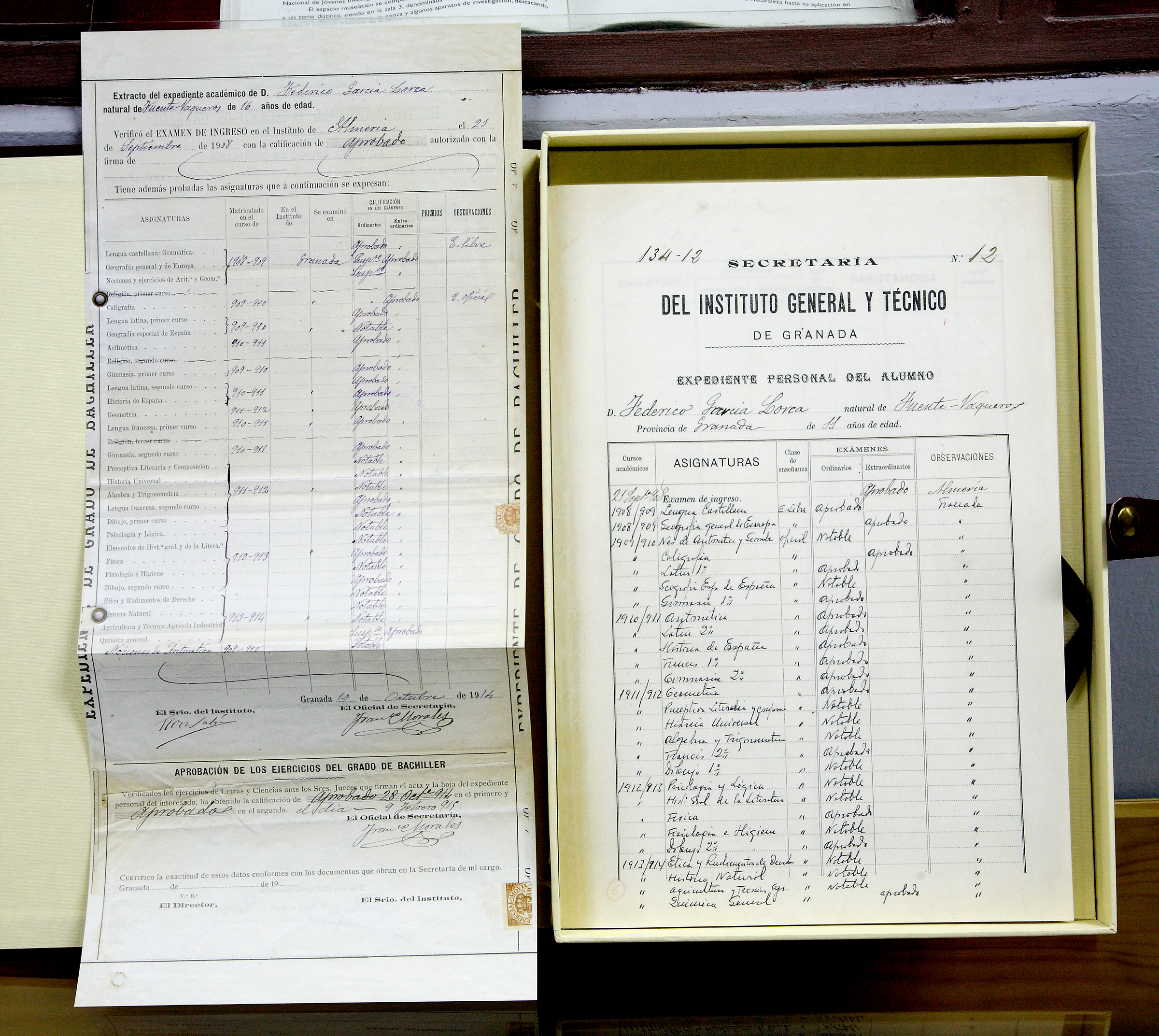
The current name of the Padre Suárez College was authorized in February 1934, in the midst of the Republic, a time perhaps more in line with the ideas close to Krausism and Darwinism of its most emblematic director, Rafael García Álvarez (1868-1874).
Within this line of support for science, the institute has a varied and rich heritage of Natural History and Physics and Chemistry that is part, in turn, of its Museum of Natural Sciences, which is included in the official register of museums in Andalusia.
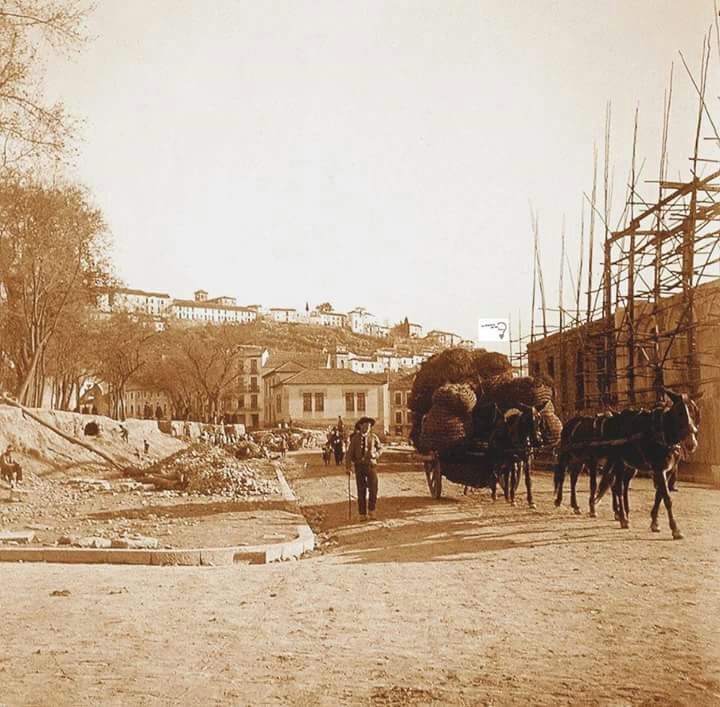
Federico enrolled for the first time as a high school student in the academic year 1909-1910 and concluded his secondary studies in 1913-1914. The future writer attended classes in the provisional building of the General Technical Institute, the palace of the Marquises of Caicedo, now the Victoria Eugenia Conservatory of Music, although his first location was in the Colegio Mayor San Bartolomé y Santiago, attached to Granada University. At the same time that he attended the official studies, the young man attended the evening support classes in the Sagrado Corazón School, a private secular center to which he went with his brother Francisco.
All the teachers Federico had to face belonged to the staff of the General Technical and current Padre Suárez College.
Padre Suarez is one of the few buildings in Granada that has a coat of arms of the Second Republic on its façade. However, the set of three coats of arms that crown the frieze originally developed the Bourbon heraldry, but were altered during the Second Republic, chopping the fleur-de-lis in the center and adding the Republican crown and castles.
Federico, tells José Mora Guarnido in his memoir Federico and his World that, as a high school student, he was not punctual. His relaxation contrasted with the attitude of his father for whom, for example, the ritual of the family meal at the house on the Acera del Casino was as severe as it was unavoidable.
“One day, however, the delay went into overdrive. Even his mother was more than angry, she was alarmed, Had something happened to him? Federico arrives, sees that they are already at the first course after the soup, and says nothing. Don Federico explodes angrily.
-Child, did you think that this house is an inn? That’s the last time you’ll be late for lunch!…. From tomorrow, whoever does not arrive on time, does not sit at the table.
Federico responds curtly.
“Well, I won’t sit down!
I don’t want to lock myself in the house to eat at twilight!
There is a silence full of foreboding. What will Don Federico do? What will he respond to this final expression of rebellion? Everyone eats in silence without raising their eyes from their plates, in an unbearable tension. And suddenly the cook innocently breaks this tension, leaning out and asking:
-What does Mr. Federico want in the omelet?
-what does Mr. Federico want?
Before he answers, Don Federico says angrily:
– Chrysanthemums!…Violets!… Twilight!”
In 1918, Father Suarez celebrated the first centenary of the building’s occupation with a series of conferences and commemorative events. The institute, however, was founded much earlier, in 1845, under the Pidal law. At the beginning, the General Technical Institute served as a center associated with the University of Granada, the current building of the Bartolomé y Santiago School.
The works were so long and difficult that when they were finally finished, those responsible agreed to write on a commemorative stone: “The enthusiasm of the parents’ committee formed by Luis Seco de Lucena, Juan Blanca, Juan Cogollos, José María Caparrós and Aureliano del Castillo and the active cooperation of Natalio Rivas, Undersecretary of Public Instruction, overcame the difficulties in the completion of this building. The cloister of the institute expresses its gratitude to them with this plaque. Granada XXV-VI-MCMVIII”.
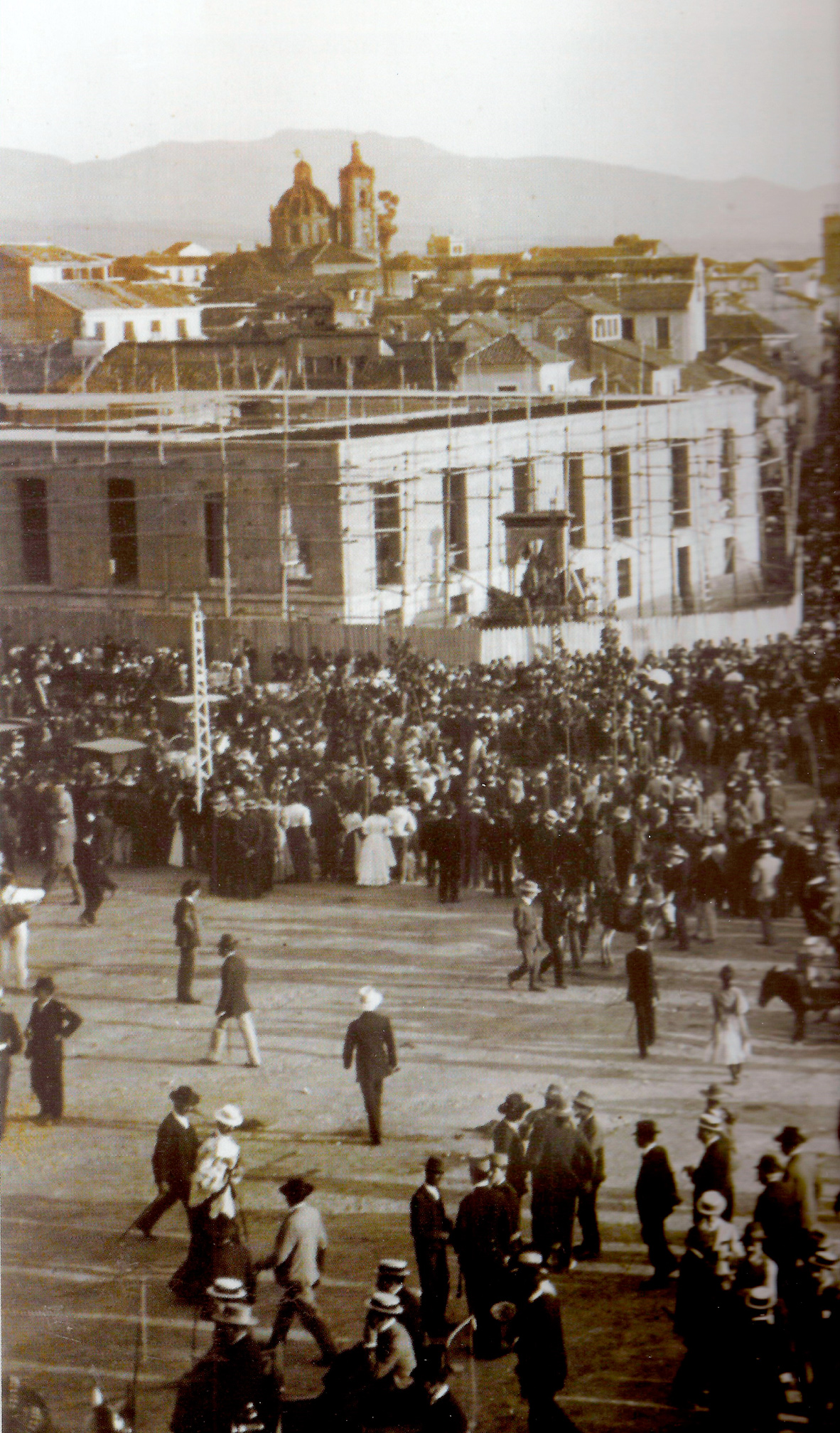
Lorca was aware of his poor results as a student. In an interview with Ernesto Giménez Caballero that appeared in La Gaceta Literaria on December 1, 1928, shortly before his trip to New York, he states: “I studied a lot. I was at the Sagrado Corazón de Jesús (Sacred Heart of Jesus), in Granada. I knew a lot, a lot. But at the Institute they gave me huge assignments. Then, at the University, I failed in Literature, Precepts and History of the Spanish Language. On the other hand, I became extremely popular by giving nicknames to people”.
(Bad Student, December 1, 1928.)- Andalusian Educational Heritage Route. I. E , Padre Suárez .
- Academic Records of Illustrious Students. Instituto Padre Suárez- Non venal facsimile edition. Granada, 2007.
- Jacinto S. Martín. García Lorca, Bachelor. Alhulia. Granada, 1998.
- Lorca´s location
- Padre Suárez Institute
- current location
- Padre Suárez Institute
- ADDRESS
- Gran Vía de Colón, 61
- Web
- https://www.iespadresuarez.es/
- Telephone
- 958 893 120
- DETAILS OF THE VISIT
Open during the academic year during class hours.
The visit to the Science Museum, both for individuals and groups, is by appointment by calling 600 163 641 or by e-mail museosuarez@gmail.com.
